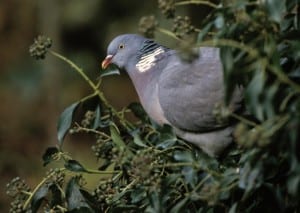 You’re on the edge of a riverbank, enjoying the view, the cool freshwater misting around you. Suddenly a monstrous catfish — 15 times your size — leaps out of the river, beaching in front of you. In one quick gulp, it sucks you down its gullet and then retreats back into the water.
You’re on the edge of a riverbank, enjoying the view, the cool freshwater misting around you. Suddenly a monstrous catfish — 15 times your size — leaps out of the river, beaching in front of you. In one quick gulp, it sucks you down its gullet and then retreats back into the water.
Fish belong in the water, right? What business do they have leaping out of their world and into ours? In this episode of Stuff to Blow Your Mind, Robert and Joe explore the surprisingly fascinating, dangerous and mysterious world of leaping, jumping and gliding fish. From skewering swordfish and breaching sharks to the alleged urethra-bound candiru, nature provides more than a few mind-blowing specimens of note.
Thankfully, you are not a mouse. If you were, this might be your fate along Australia’s Ashburton River. Scientists surveyed 18 lesser salmon catfish there and found large quantities of spinifex hopping mice in their guts. They published their findings in the Journal of Arid Environments. From other studies, we know that similar small mammals made up around 4 percent of this catfish’s diet. But this is the first report of these catfish devouring high levels of terrestrial mammals.
Both the lesser salmon catfish and the spinifex hopping mouse are common in northwestern Australia, but it was previously thought that this catfish species primarily ate insects, crustaceans and plants. But 44 percent of the 18 fish sampled had mice in their stomachs. Of those, the mice were about 95 percent of their stomach content. Two of the fish even had three mice each in their bellies. Catfish may be omnivorous, but snacking on mice is considered unusual. So how did they get there?
The researchers have two theories. The most likely is that heavy rains may have flooded the underground burrows of these mice, pushing them into the river. So rather than being gobbled up on the river’s edge, they drowned to death in their home and then the catfish had a fancy feast.
The other possibility is that these catfish are adapting, much like their larger cousins Silurus glanis. Researchers found that the larger catfish, displaced from their native habitat, were beaching themselves to eat pigeons, and 28 percent of the time they successfully captured one. Even more remarkable? They risked being stranded on the riverbank to do it. But the high-energy meal of a pigeon goes a long way when you’re a hungry catfish, so it must have been worthwhile. Maybe these lesser salmon catfish are making the same gambit in hopes of scarfing down some hopping mice?
Rest assured, catfish won’t be eating us humans anytime soon. But we still recommend that you avoid “noodling” in Australia. What’s noodling you ask? It’s when you wade into the water, feel around for a catfish hole, shove your hand in, wiggle your fingers around and wait for one to bite your hand. This type of fishing is mainly practiced in America, and it can be dangerous. Catfish are strong enough to pull a person underwater, especially if you’re wearing gloves that get caught on their teeth. They can also twist around and rip the flesh right off your bare hands.
But hey, at least we’re not being devoured off the side of a riverbank … or drowning underground before being picked apart by bloodthirsty catfish. In the meantime, human researchers hope to investigate this food cycle further, to make sure the local ecosystem hasn’t been thrown off-balance.
About Pigeon Patrol:
Pigeon Patrol Products & Services is the leading manufacturer and distributor of bird deterrent (control) products in Canada. Pigeon Patrol products have solved pest bird problems in industrial, commercial, and residential settings since 2000, by using safe and humane bird deterrents with only bird and animal friendly solutions. At Pigeon Patrol, we manufacture and offer a variety of bird deterrents, ranging from Ultra-flex Bird Spikes with UV protection, Bird Netting, 4-S Gel and the best Ultrasonic and audible sound devices on the market today.
Voted Best Canadian wholesaler for Bird Deterrent products four years in a row.
Contact Info: 1- 877– 4– NO-BIRD (www.pigeonpatrol.ca)

